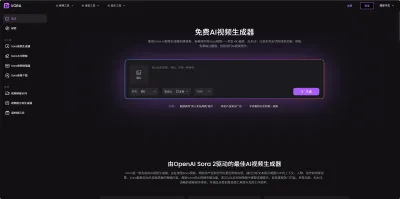Automated Fact-Checking Resources
Updates:
- 2024.6: Added a section for LLM-generated text in Related Tasks. Added papers from EACL, NAACL, and AAAI 2024
Overview
This repo contains relevant resources from our survey paper A Survey on Automated Fact-Checking in TACL 2022 and the follow up multimodal survey paper Multimodal Automated Fact-Checking: A Survey. In this survey, we present a comprehensive and up-to-date survey of automated fact-checking (AFC), unifying various components and definitions developed in previous research into a common framework. As automated fact-checking research evolves, we will provide timely updates on the survey and this repo.
Task Definition
Figure below shows a NLP framework for automated fact-checking (AFC) with text consisting of three stages:
- Claim detection to identify claims that require verification;
- Evidence retrievalto find sources supporting or refuting the claim;
- Claim verification to assess the veracity of the claim based on the retrieved evidence.

Evidence retrieval and claim verification are sometimes tackled as a single task referred to asfactual verification, while claim detection is often tackled separately. Claim verificationcan be decomposed into two parts that can be tackled separately or jointly: verdict prediction, where claims are assigned truthfulness labels, and justification production, where explanations for verdicts must be produced.
In the follow up multimodal survey, we extends the first stage with a claim extraction step, and generalises the third stage to cover tasks that fall under multimodal AFC:

- Claim Detection and Extraction: multiple modalities can be required to understand and extract a claim at this stage. Simply detecting misleading content is often not enough – it is necessary to extract the claim before fact-checking it in the subsequent stages.
- Evidence Retrieval: similarly to fact-checking with text, multimodal fact-checking relies on evidence to make judgments.
- Verdict Prediction and Justification Production: it is decomposed into three tasks considering prevalent ways that multimodal misinformation can be conveyed:
- Manipulation Classification: classify misinformative claims with manipulated content or correct claims accompanied by manipulated content.
- Out-of-context Classification: detect unchanged content from a different context.
- Veracity Classification: classify the veracity of textual claims given retrieved evidence.
Datasets
Claim Detection and Extraction Dataset
- MR2: A Benchmark for Multimodal Retrieval-Augmented Rumor Detection in Social Media (Hu et al., 2023) [Paper] [Dataset] SIGIR 2023
- FakeSV: A Multimodal Benchmark with Rich Social Context for Fake News Detection on Short Video Platforms (Qi et al., 2023) [Paper] [Dataset] AAAI 2023
- SciTweets - A Dataset and Annotation Framework for Detecting Scientific Online Discourse (Hafid et al., 2022) [Paper] [Dataset] CIKM 2022
- Empowering the Fact-checkers! Automatic Identification of Claim Spans on Twitter (Sundriyal et al., 2022) [Paper] [Dataset] EMNLP 2022
- Stanceosaurus: Classifying Stance Towards Multilingual Misinformation (Zheng et al., 2022) [Paper] [Dataset] EMNLP 2022
- Challenges and Opportunities in Information Manipulation Detection: An Examination of Wartime Russian Media (Park et al., 2022) [Paper] Findings EMNLP 2022
- CoVERT: A Corpus of Fact-checked Biomedical COVID-19 Tweets (Mohr et al., 2022) [Paper] [Dataset] LREC 2021
- MuMiN: A Large-Scale Multilingual Multimodal Fact-Checked Misinformation Social Network Dataset (Nielsen et al., 2022) [Paper] [Dataset] SIGIR 2021
- STANKER: Stacking Network based on Level-grained Attention-masked BERT for Rumor Detection on Social Media (Rao et al., 2021) [Paper] [Dataset] EMNLP 2021
- Fighting the COVID-19 Infodemic: Modeling the Perspective of Journalists, Fact-Checkers, Social Media Platforms, Policy Makers, and the Society (Alam et al., 2021) [Paper] [Dataset] Findings EMNLP 2021
- Towards Automated Factchecking: Developing an Annotation Schema and Benchmark for Consistent Automated Claim Detection (Konstantinovskiy et al., 2021) [Paper] ACM Digital Threats: Research and Practice 2021
- The CLEF-2021 CheckThat! Lab on Detecting Check-Worthy Claims, Previously Fact-Checked Claims, and Fake News (Nakov et al., 2021) [Paper] [Dataset]
- Mining Dual Emotion for Fake News Detection (Zhang et al., 2021) [Paper] [Dataset] WWW 2021
- Overview of CheckThat! 2020: Automatic Identification and Verification of Claims in Social Media (Barrón-Cedeño et al., 2020) [Paper] [Dataset]
- Citation Needed: A Taxonomy and Algorithmic Assessment of Wikipedia's Verifiability (Redi et al., 2019) [Paper] [Dataset]
- SemEval-2019 Task 7: RumourEval, Determining Rumour Veracity and Support for Rumours (Gorrell et al., 2019). [Paper] [Dataset]
- Joint Rumour Stance and Veracity (Lillie et al., 2019) [Paper] [Dataset]
- Overview of the CLEF-2018 CheckThat! Lab on Automatic Identification and Verification of Political Claims. Task 1: Check-Worthiness (Atanasova et al., 2018) [Paper] [Dataset]
- Separating Facts from Fiction: Linguistic Models to Classify Suspicious and Trusted News Posts on Twitter (Volkova et al., 2017) [Paper] [Dataset] ACL 2017
- A Context-Aware Approach for Detecting Worth-Checking Claims in Political Debates (Gencheva et al., 2017) [Paper] [Dataset] RANLP 2017
- Multimodal Fusion with Recurrent Neural Networks for Rumor Detection on Microblogs (Jin et al., 2017) [Paper] ACM MM 2017
- SemEval-2017 Task 8: RumourEval: Determining rumour veracity and support for rumours (Derczynski et al., 2017). [Paper] [Dataset]
- Detecting Rumors from Microblogs with Recurrent Neural Networks (Ma et al., 2016) [Paper] [Dataset] IJCAI 2016
- Analysing How People Orient to and Spread Rumours in Social Media by Looking at Conversational Threads (Zubiaga et al., 2016). [Paper] [Dataset] PLOS One 2016
- CREDBANK: A Large-Scale Social Media Corpus with Associated Credibility Annotations (Mitra and Gilbert, 2015). [Paper] [Dataset] ICWSM 2015
- Detecting Check-worthy Factual Claims in Presidential Debates (Hassan et al., 2015) [Paper] CIKM 2015
Verdict Prediction Dataset
Veracity Classification Dataset
Natural Claims
- Do Large Language Models Know about Facts? (Xu et al., 2024) [Paper] [Dataset] [Code] ICLR 2024
- What Makes Medical Claims (Un)Verifiable? Analyzing Entity and Relation Properties for Fact Verification (Wührl et al., 2024) [Paper] [Dataset] EACL 2024
- COVID-VTS: Fact Extraction and Verification on Short Video Platforms (Liu et al., 2023) [Paper] [Dataset] [Code] EACL 2023
- End-to-End Multimodal Fact-Checking and Explanation Generation: A Challenging Dataset and Models (Yao et al., 2023) [Paper] [Dataset] SIGIR 2023
- Modeling Information Change in Science Communication with Semantically Matched Paraphrases (Wright et al., 2022) [Paper] [Dataset] [Code] EMNLP 2022
- Generating Literal and Implied Subquestions to Fact-check Complex Claims (Chen et al., 2022) [Paper] [Dataset] EMNLP 2022
- SciFact-Open: Towards open-domain scientific claim verification (Wadden et al., 2022) [Paper] [Dataset] EMNLP 2022
- CHEF: A Pilot Chinese Dataset for Evidence-Based Fact-Checking (Hu et al., 2022) [Paper] [Dataset] NAACL 2022
- WatClaimCheck: A new Dataset for Claim Entailment and Inference (Khan et al., 2022) [Paper] [Dataset] ACL 2022
- Open-Domain, Content-based, Multi-modal Fact-checking of Out-of-Context Images via Online Resources (Abdelnabi et al., 2022) [Paper] [Dataset] CVPR 2022
- MMM: An Emotion and Novelty-aware Approach for Multilingual Multimodal Misinformation Detection (Gupta et al., 2022)
编辑推荐精选


Vora
免费创建高清无水印Sora视频
Vora是一个免费创建高清无水印Sora视频的AI工具


Refly.AI
最适合小白的AI自动化工作流平台
无需编码,轻松生成可复用、可变现的AI自动化工作流


酷表ChatExcel
大模型驱动的Excel数据处理工具
基于大模型交互的表格处理系统,允许用户通过对话方式完成数据整理和可视化分析。系统采用机器学习算法解析用户指令,自动执行排序、公式计算和数据透视等操作,支持多种文件格式导入导出。数据处理响应速度保持在0.8秒以内,支持超过100万行数据的即时分析。


TRAE编程
AI辅助编程,代码自动修复
Trae是一种自适应的集成开发环境(IDE),通过自动化和多元协作改变开发流程。利用Trae,团队能够更快速、精确地编写和部署代码,从而提高编程效率和项目交付速度。Trae具备上下文感知和代码自动完成功能,是提升开发效率的理想工具。


AIWritePaper论文写作
AI论文写作指导平台
AIWritePaper论文写作是一站式AI论文写作辅助工具,简化了选题、文献检索至论文撰写的整个过程。通过简单设定,平台可快速生成高质量论文大纲和全文,配合图��表、参考文献等一应俱全,同时提供开题报告和答辩PPT等增值服务,保障数据安全,有效提升写作效率和论文质量。


博思AIPPT
AI一键生成PPT,就用博思AIPPT!
博思AIPPT,新一代的AI生成PPT平台,支持智能生成PPT、AI美化PPT、文本&链接生成PPT、导入Word/PDF/Markdown文档生成PPT等,内置海量精美PPT模板,涵盖商务、教育、科技等不同风格,同时针对每个页面提供多种版式,一键自适应切换,完美适配各种办公场景。


潮际好麦
AI赋能电商视觉革命,一站式智能商拍平台
潮际好麦深耕服装行业,是国内AI试衣效果最好的软件。使用先进AIGC能力为电商卖家批量提供优质的、低成本的商拍图。合作品牌有Shein、Lazada、安踏、百丽等65个国内外头部品牌,以及国内10万+淘宝、天猫、京东等主流平台的品牌商家,为卖家节省将近85%的出图成本,提升约3倍出图效率,让品牌能够快速上架。


iTerms
企业专属的AI法律顾问
iTerms是法大大集团旗下法律子品牌,基于最先进的大语言模型(LLM)、专业的法律知识库和强大的智能体架构,帮助企业扫清合规障碍,筑牢风控防线,成为您企业专属的AI法律顾问。


SimilarWeb流量提升
稳定高效的流量提升解决方案,助力品牌曝光
稳定高效的流量提升解决方案,助力品牌曝光


Sora2视频免费生成
最新版Sora2模型免费使用,一键生成无水印视频
最新版Sora2模型免费使用,一键生成无水印视频
推荐工具精选
AI云服务特惠
懂AI专属折扣关注微信公众号
最新AI工具、AI资讯
独家AI资源、AI项目落地

微信扫一扫关注公众号









